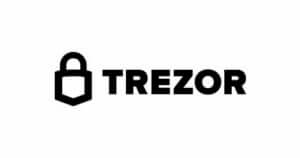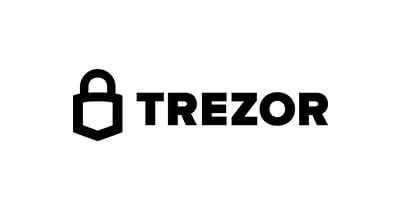Trezor wallet review
When it comes to looking after your digital assets, hardware wallets offer the best combination of security and convenience. The first company ever to make a hardware wallet was the Czech company Trezor which formed in 2012, and 10 years later they are still making very high quality devices to protect your crypto.
In this Trezor review we look at what Trezor hardware wallets are, how they work, and whether they represent the best way to look after your crypto and NFTs.
What is a Trezor hardware wallet?

A Trezor hardware wallet is a device that allows you to store your digital assets, such as cryptocurrencies and NFTs, offline. Referred to as a ‘cold’ wallet, this type of storage represents the best defense against hackers, and is ideal for those who don’t use their assets on a daily basis.
A Trezor cold wallet allows you to send, receive and store hundreds of cryptocurrencies and NFTs in an extremely secure manner. You can also use a Trezor wallet to buy and swap cryptocurrencies, something that other wallets cannot do.
Another benefit of a Trezor hardware wallet is that even if you lose access to the device, for example if you misplace it or it breaks, you can simply reload the accounts onto a new device without worrying about anyone else stealing them. This means that you will never lose access to the assets themselves.
Trezor has launched two models in its time – the Model One in 2014, which was the first ever hardware wallet, and the Model T in 2018. It has also made variations, such as a luxury titanium and gold model in 2019, but these remain its core products.
How does a Trezor wallet work?
A Trezor wallet is designed to keep digital assets offline while not being used, making it much harder for someone other than the wallet’s owner to move them. Digital assets held in phone or computer wallets, or left on an exchange, are referred to as ‘hot’ wallets.
These wallets are maintained by third-parties, with your wallet details held on their servers. If a hacker gets access to that information then they can potentially get into your wallet behind the scenes and move your assets without you knowing.
A Trezor cold wallet however is its own entity, not connected to a server or even to the internet when not being used. No one can hack into a Trezor hardware wallet, while the assets held on it cannot be moved by anyone who doesn’t have physical access to it.
This means that a Trezor cold wallet is essentially unhackable, as long as you take the precautions we’ll outline later.
To send assets using a Trezor wallet, you’ll need to connect your Trezor to a computer and use either the Trezor Suite through its website or a third-party wallet. Fortunately, Trezor is a well known brand in the crypto space and many wallet apps support it, such as Exodus, MyEtherWallet and MetaMask.
You can’t interact with your Trezor wallet without first plugging it onto a computer.
Supported cryptocurrencies
Trezor says that its hardware wallets are “designed to work with Bitcoin along with the most resilient cryptocurrencies and ERC-20 tokens”, support that currently stretches to up to 1,500 coins and NFTs.
This is some way short of the number supported by other premium hardware wallet makers, but this will probably cover the coins that the majority of users will want to store on it, including all the most popular coins and stablecoins. Seeing as Ethereum is supported, this means that all ERC-20 tokens are supported too.
Trezor provides a full list of supported coins here, but some of the most popular coins that Trezor wallets support are:
- Bitcoin (BTC)
- Ethereum (ETH)
- Polkadot (DOT)
- Ripple (XRP)
- Tether (USDT)
- Litecoin (LTC)
- Binance Coin (BNB)
- Stellar (XLM)
- Chainlink (LINK)
- Shiba Inu (SHIB)
- Cardano (ADA)
- Tezos (XTZ)
Trezor also supports NFTs on the Ethereum network. This is the least you should expect from a premium hardware wallet, but support for Polygon, as you’ll find with Ledger wallets, would have been ideal.
Trezor Wallets – the lowdown
Price
The Trezor Model One retails at $80 while the more advanced Trezor Model T with its color screen retails at $260. This is surprisingly expensive, considering that the models are six years and four years old respectively. For comparison, Ledger’s budget hardware wallet, the Nano S Plus, also retails for $80 but it was released in 2022, while its Nano X, released in 2019, is over $100 cheaper and has more features.
There are also more budget-friendly hardware wallets out there for half the price of the Model One that are more advanced, both in design and features, and it’s hard for Trezor to justify such a high price tag for a hardware wallet that is now six years old.
Security
The reason why a Trezor cold wallet is so secure is because to access the assets on the device requires physical access to it – the Model One requires the pressing of buttons on the front, while the Model T requires access to the touchscreen. To use a Trezor device you also need the PIN, which is created at setup, which presents another obstacle to illicit use.
There is one caveat to this however – the private key. A wallet’s private key is like a house key – anyone who has possession of it can get into the house in question. This private key is vital because it allows the owner to recover access to the funds within the wallet should anything happen to it.
Trezor devices don’t give you the private key unencrypted for safety reasons. Rather, you will be given a recovery seed when you set up the device which fulfills a similar role. You MUST keep this recovery seed secure, because if someone else gets hold of it they can ‘recover’ your account from their location and access your funds.
There is also a secondary security measure you can set up called a passphrase to make it extra difficult for someone to access your Trezor hardware wallet should they get hold of it.
Setup
Setting up a Trezor wallet is very easy, with the Trezor Suite guiding you through step by step. Once you’ve connected your device and booted it up you’ll see your recovery code, which you must write down and store somewhere very safe.
One this is done you’ll be asked to choose a PIN for the device, which you will input every time you want to access it.
With the device set up, you’ll be asked which accounts you want to add. These represent different coins or (blockchains in the case of NFTs), with each different blockchain requiring a different account. You should set up accounts for any cryptocurrencies you think you’ll be sending to your wallet – each time you set up an account it will generate a new address for that cryptocurrency.
On some occasions you will have to install what’s called a ‘bridge’ between the Trezor wallet and a cryptocurrency, but this is just a connection that’s required to send the coins to your Trezor.
You can now send over (or buy) cryptocurrencies through the Trezor Suite and add them to your Trezor wallet. Once you’re done, unplug the wallet and store it somewhere safe.
Competition
When it comes to the competition, you won’t be surprised to learn that Ledger is Trezor’s chief rival. The two are the biggest names in the hardware wallet world, and Trezor’s first mover advantage certainly gave it the edge for many years.
However, many feel that Ledger has stolen a march on Trezor, with its own premium model, the Nano X, offering more features for much less money than the Model One, not to mention being a more recent release.
The color screen was a big deal when it came out, but the Nano X is superior in other ways, while its neat rectangular design will be more appealing to many than Trezor’s larger triangular design.
We’ve already mentioned the fact that 2016’s Trezor Model One now has competition from 2022’s Ledger Nano S Plus, and, with identical price points, there is no reason why anyone would choose the older Trezor model.
Trezor Model One vs Model T
As we’ve mentioned, Trezor has released two core models to date – the Model One in 2014 and the Model T in 2018. Trezor provides a comparison of these two models on its website, with their consensus being that the Model One is the best option for those who want basic crypto security and the Model T being more suitable for those who want a more advanced storage method.
The core advancements of the Model T over the Model One are Shamir backup, which Trezor says can let you make “disaster-proof backups of your keys”; FIDO2 authenticator support for extra security; and the ability to store Monero (XMR) using a third-party interface.
Of course, the Model T has the color screen for easy confirmations, but in truth it is hardly more feature-rich than the Model One. It has a faster processor and supports more coins, but apart from that it isn’t really much of an upgrade – certainly not enough to warrant splashing out an extra $180 for.
The Verdict
Trezor was the first hardware wallet maker in the space, and because of that it will always have a strong reputation in the market. However, as we have found in this Trezor review, any crown it was wearing in those early years has started to slip.
Trezor hasn’t released a new device since 2018, during which time its main competitor has released two, both of which have more under the hood than Trezor’s premium model. Trezor has not cut back its pricing to reflect this, perhaps believing that its products are superior in other ways, but even a color screen is not enough to warrant such a high price difference.
Trezor wallets are still extremely safe and easy to use, with the Trezor Suite offering users everything they would want, but those looking for a bit more than basic storage have already started looking elsewhere.
Unless Trezor reduces its pricing to reflect the comparative quality of its wallets, or it releases a new model that blows the rest out of the water, it risks falling behind in the hardware wallet race.

